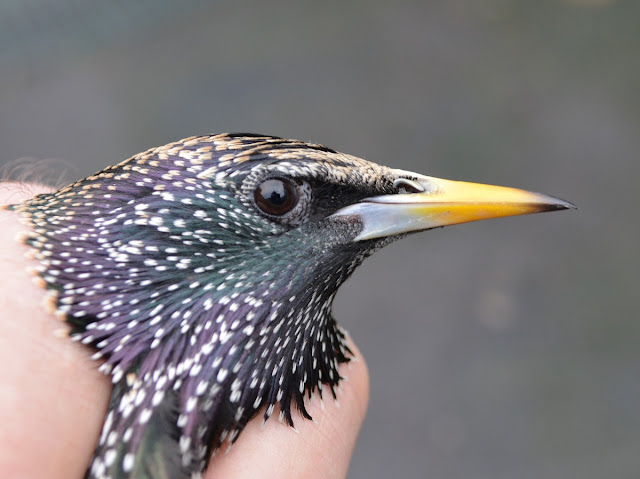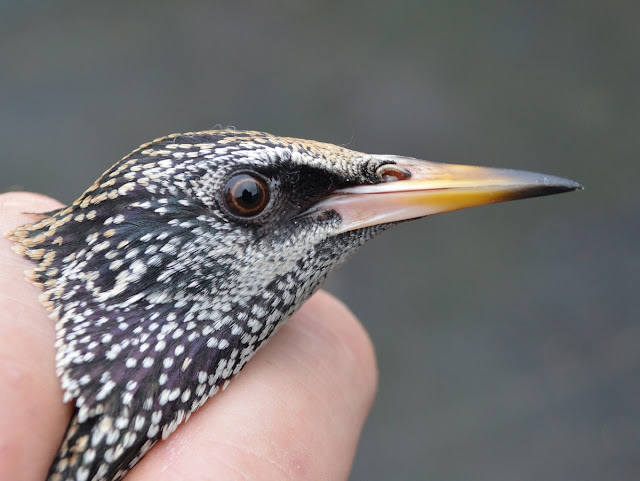 |
| D61 is a frequent visitor to the fat cakes at the moment and was ringed as a juvenile last summer. |
 |
| Male Starling 21/01/2017 |
 |
| Female Starling 21/01/2017 |
Luckily it went into the bird table trap and I was able to catch it. The upper mandible looked like it had suffered some sort of damage which had allowed the lower mandible to over-grow. Normally the upper mandible overlaps the lower at the tip and, along with normal wear from feeding, helps to prevent this sort of deformity.
 |
| Male Starling with deformed bill 21/01/2017. |
 |
| Male Starling with deformed bill 21/01/2017. |
It's not just Starlings that I have been watching and ringing as the other feeders have been attracting large numbers of birds and Goldfinches in particular. There are 7 seed feeders around the garden and the birds are currently getting through over a kilo of sunflower hearts each day.
 |
| The scene around one of the 7 sunflower heart feeders yesterday. |
 |
| Male Goldfinch 21/01/2017 |
 |
| Adult male Siskin 21/02/2017 |


No comments:
Post a Comment